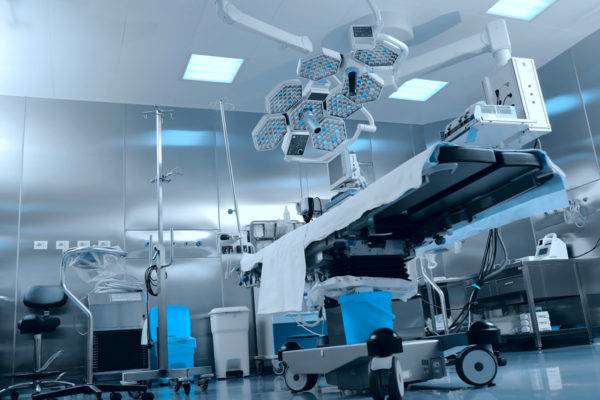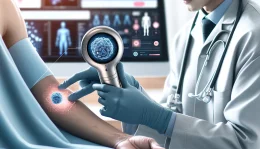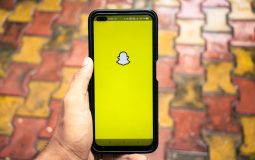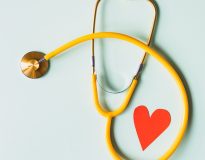Now that the wide selection of “quantified self” products — like FitBit and Jawbone — have bled over from the fitness fanatics to mainstream consumers, we’ve reached a tipping point in which we should expect more from our connected products. Consumers have become accustomed to looking at readouts that assess our own personal health, but unfortunately this information is not always ‘smart’ or actionable for the individual and does very little to advance the medical community’s ability to improve our health.
In addition to the frequent lack of guidance on how to react to this health information, what is missing from these available data sets, which would help us better detect, treat and stop the spread of illnesses is highly geo-located, medically accurate fever and symptom data taken from someone who has just fallen in, before they enter into the health system — and generally, before they have taken to the internet.
The U.S. Center for Disease Control (CDC) aggregates provider-reported data (illness data as reported by doctors or labs) which is high in accuracy. Unfortunately, it is sparse; not everyone reports, compliance isn’t great, and it can be highly delayed — the lag time is usually many weeks or more, a lifetime when we are talking about a spreading illness.
When Google came out with Flu Trends, it was a huge leap forward in thinking. They were mining search queries, entered by people that are presumably still at home, before they’ve entered the health system, to find flu-like terms. This yielded real-time data. There are four problems with this data however.
The four problems with real-time health data
People do not frequently turn on geo-located services when they are searching (neither on web nor on mobile), so Google could instead mine the IP address to get a regional or city level understanding of geolocation, but not to small geographic areas, such as a neighborhood or a small community around a school.
Second, the use of Natural Language Processing and related technologies to understand what someone is writing about can lead to false positives. For example, “Bieber fever” is clearly not about the flu, a fever, or illness.
Third, there is a bucket of what I call “important non-direct effects” like the news. For example, if a local news outlet did a story on a new treatment for the flu, well then there could be a spike in search queries on the flu, but not related necessarily to an actual increase in flu.
Finally, the power of this approach may be limited because search queries also don’t reveal how an illness progresses, or necessarily the accompanying symptoms, to indicate the type of illness – a contagious one or otherwise.
Other companies have attempted to mine social media using similar approaches, for example mining Facebook or Twitter posts, but these have the same limitations.
Enter smarter connected health products
Connected devices bridge the gap with current methods for identifying an ‘outbreak’ (regardless of its severity, from strep throat at your child’s elementary school, or more serious cases of Yellow Fever or Zika, top of mind concerns for those attending the upcoming Olympic Games in Rio).
There are a couple of important notes on the value that connected devices bring.
First, there is inherent value for individual users given its presumed delivery of accurate, real-time information that helps the user to better respond to what’s going on with their health in their moment of need. Rather than a medical device that simply tells you whether or not there’s something wrong, smart devices can alert you to exactly how serious it is, how it relates to illnesses you’ve had in the past, and what you can or should do next, thereby minimizing any sense of anxiety.
When a sick person – particularly a sick child – is in a moment of need, the first thing that person or those concerned parents look for isn’t simply an answer to “how high is my temperature?” What they really want are answers around what that number means and what they should do next — What is it? Should I call a doctor? How can I/he/she get better?
With smart devices that can respond to the onset of illness in real-time, we finally have the ability to deliver those answers to that person in their time of need, helping them detect illness sooner, get care faster and prevent their illness from spreading.
Second, anonymous, aggregated data from these devices can offer more detailed and timely information to healthcare professionals to help them better diagnose patients. It can alert emergency medical response teams and health authorities to trends and patterns in contagious illness in a particular geography or among a particular population, in real time. This can signify potential outbreaks and allow them to allocate resources accordingly.
Think of it as a “Waze” for public health. When that information is also available to the general public, they have the knowledge of what they’re walking into and can be better prepared.
The key to enabling this type of value is to take a medical device people are already comfortable using, without requiring a behavior change. Take a ubiquitous tool – as we did with Kinsa for instance, a regular stick thermometer – and make it smarter by connecting it to your smartphone.
Key IoT applications for global health
The idea of real-time, crowdsourced data eliminates the need to rely on information coming from physicians on the ground in the case of global health emergencies. It eliminates observer bias and transcription errors and paints a realistic picture of what’s happening in that moment.
In the case of the Olympics this year and fears related to the Zika Virus or Yellow Fever, that’s where smart products can play a major role in monitoring how and where these illnesses are spreading.
Early detection, early response will be essential in the effort to contain these outbreaks.
The author is the Founder & CEO of Kinsa, which is using mobile technologies to create a real-time map of human health to track—and stop—the spread of communicable illness.










